MAGICAL NIGHT



“I am a writer and I want to write.” ― Jane Bowles Fear and Hope “Like most people, you

MARIA YAKUNCHIKOVA (1870-1902) WOMEN WITH A PASSION FOR ART The first female artist I want to introduce in the series

THE SIMONE DE BEAUVOIR EFFECT “I am incapable of conceiving infinity, and yet I do not accept finity.” SIMONE

Witches’ Sabbath is a 1798 oil on canvas by the Spanish artist Francisco Goya . Goya used the imagery of covens of witches in a number of works, most notably in one of his Black Paintings, Witches Sabbath or The Great He-Goat(1821–1823) which contains similar sharp political and social overtones. At the time, a bitter struggle raged in Spain between liberals and those in favour of a church and a royalist-lead state
Witches’ Sabbath shows the devil in the form of a garlanded goat, surrounded by a coven of disfigured, young and aging witches in a moonlit barren landscape. The goat possesses large horns and is crowned by a wreath of oak leaves. An old witch holds an emaciated infant in her hands. The devil seems to be acting as priest at an initiation ceremony for the child, though popular superstition at the time believed the devil often fed on children and human foetuses. The skeletons of two infants can be seen; one discarded to the left, the other held by a crone in the centre foreground.
The English word “sabbat” came indirectly from Hebrew (שַׁבָּת). In Hebrew it means “to cease” or “to rest”. In Judaism Shabbath is the rest day celebrated on Saturday. In connection with the Medieval popularity of the belief that Jews worship the Devil, satanic gatherings of witches were called “sabbats” or synagogues. The latter is a Jewish places of worship, much like a church. Alternately, some Christians were accused of Judaizing. Christian Sabbathkeepers, who never accepted Emperor Constantine’s edict in 321 A.D., the first enforcing Christian worship on Sunday rather than on Sabbath, were demonized and accused of witchcraft; hence, the accusatory nomenclature, “witches’ sabbath.”
Source Wikipedia

MARIA YAKUNCHIKOVA (1870-1902) WOMEN WITH A PASSION FOR ART The first female artist I want to introduce in the series
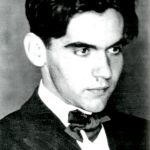
Federico Garcia Lorca “Let there be a landscape of open eyes and bitter wounds on fire. No one is sleeping
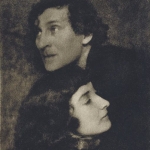
MARC AND BELLA CHAGALL ~ A COLORFUL LOVE “In our life there is a single color, as on an artist’s

Witches’ Sabbath is a 1798 oil on canvas by the Spanish artist Francisco Goya . Goya used the imagery of covens of witches in a number of works, most notably in one of his Black Paintings, Witches Sabbath or The Great He-Goat(1821–1823) which contains similar sharp political and social overtones. At the time, a bitter struggle raged in Spain between liberals and those in favour of a church and a royalist-lead state
Witches’ Sabbath shows the devil in the form of a garlanded goat, surrounded by a coven of disfigured, young and aging witches in a moonlit barren landscape. The goat possesses large horns and is crowned by a wreath of oak leaves. An old witch holds an emaciated infant in her hands. The devil seems to be acting as priest at an initiation ceremony for the child, though popular superstition at the time believed the devil often fed on children and human foetuses. The skeletons of two infants can be seen; one discarded to the left, the other held by a crone in the centre foreground.
The English word “sabbat” came indirectly from Hebrew (שַׁבָּת). In Hebrew it means “to cease” or “to rest”. In Judaism Shabbath is the rest day celebrated on Saturday. In connection with the Medieval popularity of the belief that Jews worship the Devil, satanic gatherings of witches were called “sabbats” or synagogues. The latter is a Jewish places of worship, much like a church. Alternately, some Christians were accused of Judaizing. Christian Sabbathkeepers, who never accepted Emperor Constantine’s edict in 321 A.D., the first enforcing Christian worship on Sunday rather than on Sabbath, were demonized and accused of witchcraft; hence, the accusatory nomenclature, “witches’ sabbath.”
Source Wikipedia

MARIA YAKUNCHIKOVA (1870-1902) WOMEN WITH A PASSION FOR ART The first female artist I want to introduce in the series

Federico Garcia Lorca “Let there be a landscape of open eyes and bitter wounds on fire. No one is sleeping

MARC AND BELLA CHAGALL ~ A COLORFUL LOVE “In our life there is a single color, as on an artist’s

The silent friendliness of the moon
(misquoting Virgil) accompanies you
since that one night or evening lost
in time now, on which your restless
eyes first deciphered her forever
in a garden or patio turned to dust.
Forever? I know someone, someday
will be able to tell you truthfully:
‘You’ll never see the bright moon again,
You’ve now achieved the unalterable
sum of moments granted you by fate.
Useless to open every window
in the world. Too late. You’ll not find her.’
We live discovering and forgetting
that sweet familiarity of the night.
Take a long look. It might be the last.
Jorge Luis Borges
Painting is “Moon light over the Seine”
Henry Pether (1828-1865)

“I am a writer and I want to write.” ― Jane Bowles Fear and Hope “Like most people, you

THE SIMONE DE BEAUVOIR EFFECT “I am incapable of conceiving infinity, and yet I do not accept finity.” SIMONE

Federico Garcia Lorca “Let there be a landscape of open eyes and bitter wounds on fire. No one is sleeping
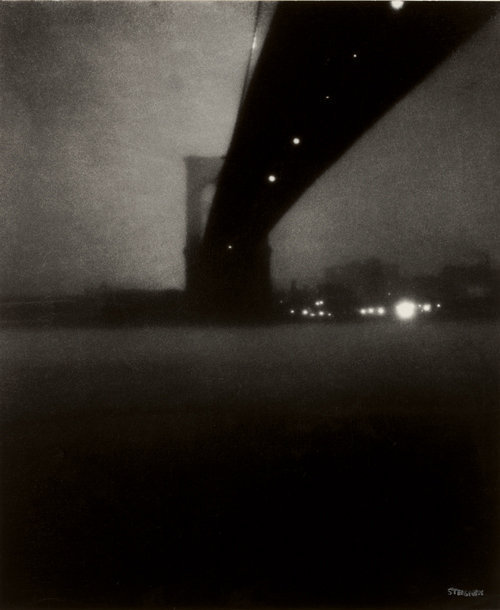
EDWARD STEICHEN
(b Luxembourg, 27 March 1879; d West Redding, CT, 25 March 1973).
American photographer, painter, designer and curator of Luxembourgeois birth. Steichen emigrated to the USA in 1881 and grew up in Hancock, MI, and Milwaukee, WI. His formal schooling ended when he was 15, but he developed an interest in art and photography. He used his self-taught photographic skills in design projects undertaken as an apprentice at a Milwaukee lithography firm. The Pool-evening (1899; New York, MOMA) reflects his early awareness of the Impressionists, especially Claude Monet, and American Symbolist photographers such as Clarence H. White. While still in Milwaukee, his work came to the attention of White, who provided an introduction to Alfred Stieglitz; Stieglitz was impressed by Steichen’s work and bought three of his photographs.
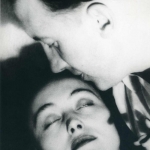
A poem by Paul Eluard “I cannot be known Better than you know me Your eyes in which we sleep
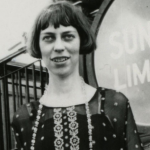
Writing a story or a novel is one way of discovering sequence in experience, of stumbling upon cause and effect

Boy with Cello – 1931 Eva Besnyö


MARIA YAKUNCHIKOVA (1870-1902) WOMEN WITH A PASSION FOR ART The first female artist I want to introduce in the series

MARC AND BELLA CHAGALL ~ A COLORFUL LOVE “In our life there is a single color, as on an artist’s

WILLIAM BOUGUEREAU AND HIS PASSION FOR PAINTING “Each day I go to my studio full of joy; in the evening


MARIA YAKUNCHIKOVA (1870-1902) WOMEN WITH A PASSION FOR ART The first female artist I want to introduce in the series

MARC AND BELLA CHAGALL ~ A COLORFUL LOVE “In our life there is a single color, as on an artist’s

WILLIAM BOUGUEREAU AND HIS PASSION FOR PAINTING “Each day I go to my studio full of joy; in the evening

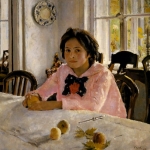
I was still little when I saw this painting called “Girl with Peaches” for the first time. I found it

“I am a dreamer. I know so little of real life that I just can’t help re-living such moments as

Edvard Munch – Jealousy (1895) “O, beware, my lord, of jealousy; It is the green-ey’d monster, which doth mock The

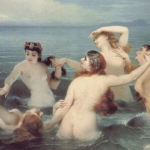
THE SIRENS ARE ENCHANTERS Circe warns Odysseus about the Sirens: “You will come first of all to the Sirens, who

“I love the silent hour of night, for blissful dreams may then arise, revealing to my charmed sight what may

You will hear thunder and remember me, And think: she wanted storms. The rim Of the sky will be the
